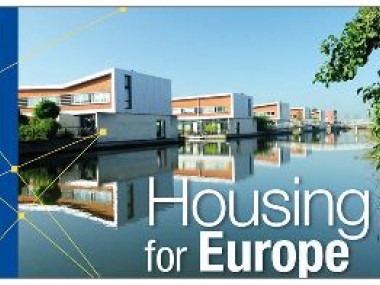Using Design Coding for successful and sustainable housing developments
Edited on
09 October 2017Why urban coding is a good tool for quality in urban space, excellence in design and performance in building? HOPUS "Housing praxis for urban sustainability" is an URBACT project that has worked for two years on design coding and other forms of smart project guidance for successful housing development. To coincide with its final conference and conclusion of project activity, HOPUS has produced a final publication, a book entitled “![]() Download HOPUS - Final Report (9.77 MB)”. This illustrated document provides valuable support for policy makers and practitioners involved in tackling the challenges of delivering “Good, Green, Safe, Affordable Housing” both in the public and private spheres.
Download HOPUS - Final Report (9.77 MB)”. This illustrated document provides valuable support for policy makers and practitioners involved in tackling the challenges of delivering “Good, Green, Safe, Affordable Housing” both in the public and private spheres.

Designing quality housing brings together local authorities, private investors who find the field of residential development very lucrative, and many other stakeholders each aiming at different objectives. In times of economic drought social housing programs around Europe have lost much of their momentum, and are in many cases altogether absent: this is the reason why private developments have taken over, leading to a more or less fragmented urban growth depending on how efficient the local governance model is. The result is a strongly market-oriented city, where housing is offered for sale not unlike in a supermarket. The accurate quality control imposed on food products finds absolutely no equal in the housing market, creating a situation where it is difficult for consumers/users to evaluate ahead of time what they are investing in.
As a response to the ongoing development of low quality housing in their cities, HOPUS Partners focused on the following question: 'is it possible to boil down some higher building design principles in order to establish a set of minimum standard for delivering a more human, coherent and sustainable public realm?'
HOPUS Partners found that design coding, being a complementary aspect of master planning, is capable of bridging the "gap" between urban vision and building design, such as in the case of Swindon, where the developer of 4500 homes on a 309 hectares area, has, in agreement with the council, led the definition of a design code with a consultant code designer, set out as part of the whole master planning process.
HOPUS Final Publication is a compendium of interesting papers on design coding as tool, on housing quality criteria, on various housing sub-themes and is further richly supported by a range of good practice examples drawn from across Europe. It includes articles explaining the experiences shared between network partners during the lifecycle of the project – University of Rome, Delft University of Technology, Mediterranean University and City of Reggio Calabria, Gdansk University of Technology.
Read more:
 Download HOPUS - Final Report (9.77 MB) - PDF
Download HOPUS - Final Report (9.77 MB) - PDF Download Hopus Final Outputs - Fact Sheet (313.44 KB) - PDF
Download Hopus Final Outputs - Fact Sheet (313.44 KB) - PDF Download Design coding and the creative, market and regulatory Tyrannies of practice Thematic Paper (320.86 KB) – URBACT Tribune - PDF
Download Design coding and the creative, market and regulatory Tyrannies of practice Thematic Paper (320.86 KB) – URBACT Tribune - PDF
Submitted by admin on




